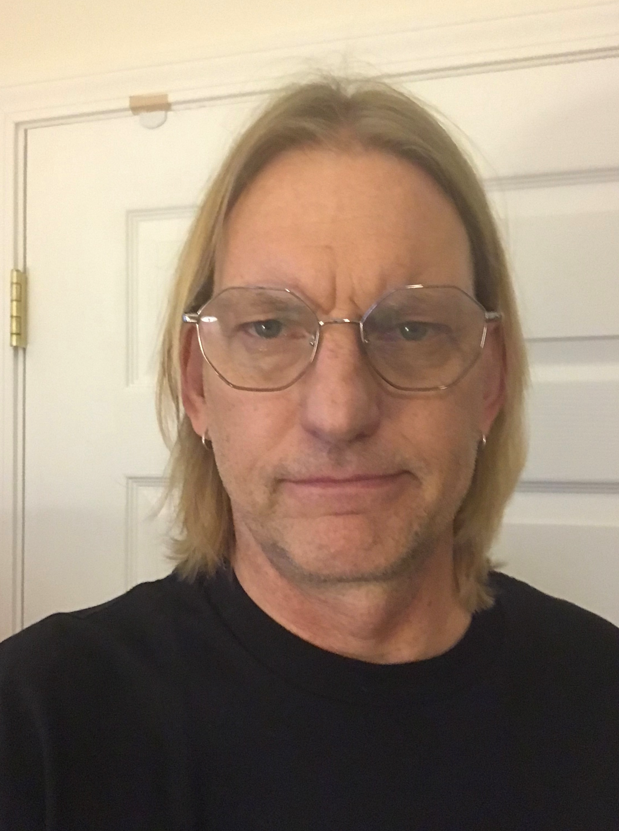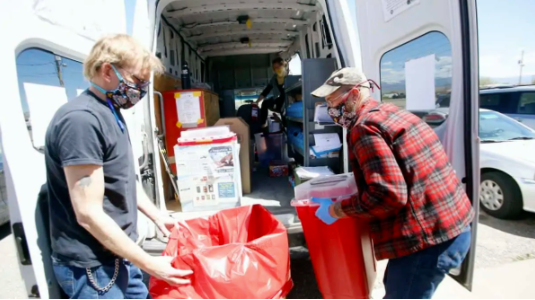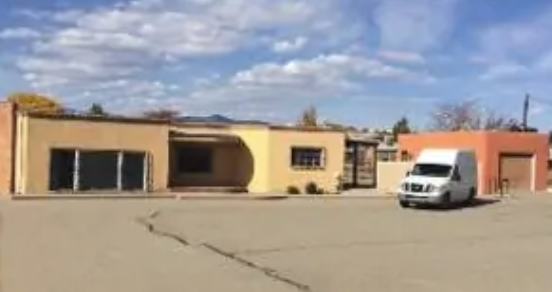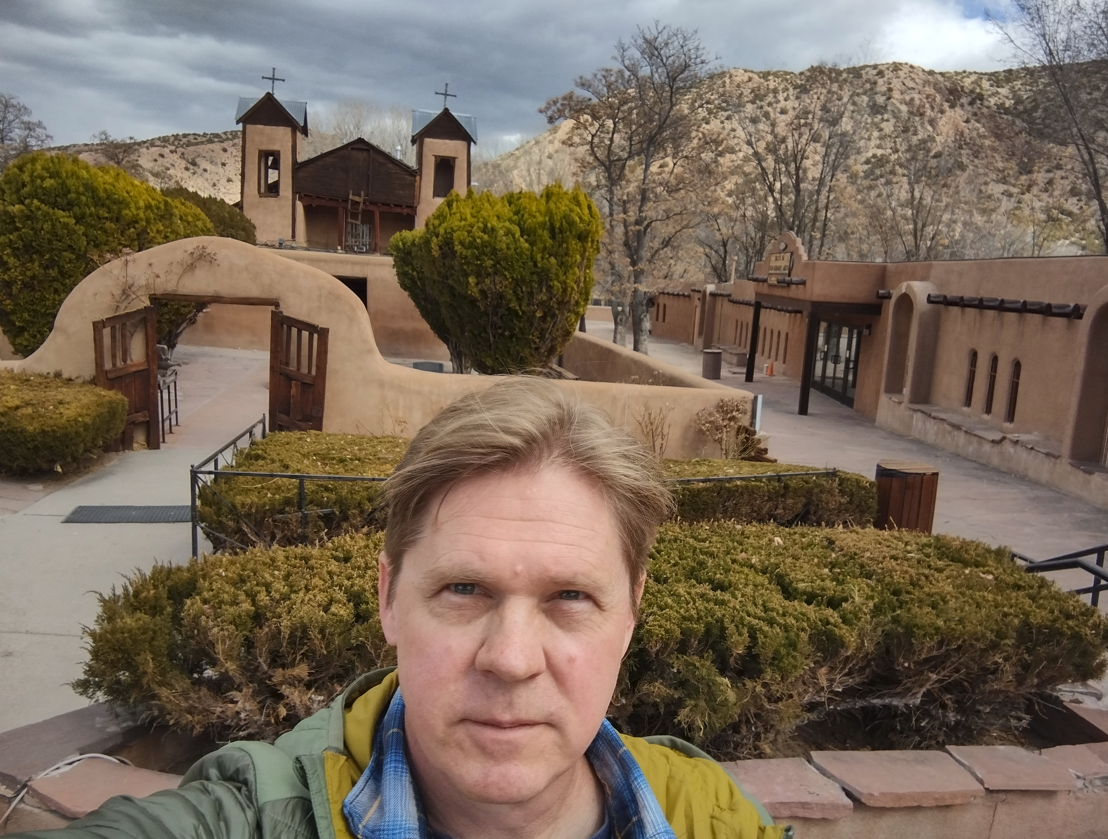SLP Insights Interview with Phillip Fiuty: Harm Reduction Services in Rural Northern New Mexico
NOTE: Sober Linings Playbook is a personal website. Any views or opinions expressed herein belong solely to the website owner and do not represent those of individuals or organizations the owner may be associated with in a professional or personal capacity, unless explicitly stated.
This month's SLP Insights interview is with Phillip Fiuty, Harm Reduction Program Director for The Mountain Center, which serves Santa Fe, Rio Arriba and Taos counties in northern New Mexico. Fiuty began providing community syringe and naloxone distribution in rural southern Santa Fe county in the early 1990’s. He was a harm reduction volunteer for the AIDS Resource Center of Wisconsin from 1999 to 2001, a harm reduction outreach specialist for Albuquerque Healthcare for the Homeless from 2001 to 2002, and the Harm Reduction Program Manager for the New Mexico Dept. of Health from 2002 to 2006. He has developed and provided education and harm reduction efforts targeting methamphetamine, safe access to medical cannabis, and the use of ayahuasca and ibogaine for the treatment of SUD.
I reached out to Phillip for several reasons. First, while visiting New Mexico for pleasure, I thought it might be interesting to conduct a couple of New Mexico-themed SLP Insights interviews [see last month’s interview with University of New Mexico’s Dr. Katie Witkiewitz]. Second, I had recently read a couple of Rolling Stone articles about a 1999 heroin raid in northern New Mexico and what the author described as the lasting legacy of those raids on the rural village of Chimayó. I was intrigued. Finally, I just thought it would be interesting to hear about the unique challenges and opportunities associated with operating harm reduction services in a rural area. Most of the stories I read about innovative harm reduction focus on programs in dense urban areas.
Phillip Fiuty, Harm Reduction Program Director for The Mountain Center serving Santa Fe, Rio Arriba and Taos counties in northern New Mexico. Fiuty is a consultant, trainer and administrator for the federal PDO, SOR, SAMHSA and HRSA overdose and OUD grants in New Mexico and Rio Arriba County, as well as a new SAMHSA PFS 20 grant to examine and develop resources targeting polysubstance use in New Mexico. He was recently appointed to the Governor’s Overdose Prevention and Pain Management Advisory Council.
SLP: I’d like to hear about the Mountain Center, and specifically the harm reduction program you lead there. But first, I was hoping you could begin by providing some of the background on harm reduction efforts in New Mexico in general.
PF: Let me begin with a little bit of a backstory. I don’t know how familiar you are with New Mexico’s harm reduction programming in general. New Mexico became the second of what is still only two states – Hawaii being the first – that not just made doing needle exchanges legal. We actually passed a law in 1997, it was modeled on Hawaii’s that came before us, that essentially mandated these services into existence here in the state.
What the law does is this. New Mexico already had syringes available without a prescription, but we had a very wonky paraphernalia statute here in the state. Basically, anything becomes paraphernalia based on how it’s used. Your kitchen table can become paraphernalia. What our law did was provide an exemption to the state paraphernalia statute for both participants in the program and for providers.
The Dept. of Health has regulatory authority over harm reduction services. For participants in that program and for the Dept. of Health and its designees – like my program which is a contracted provider – we’re allowed to distribute syringes and other injection-related equipment. The law passed in 1997 and the first programs began in February of 1998. It’s been going and growing ever since.
In 2001, New Mexico also became the first state to introduce legislation around [the opioid overdose reversal medication] naloxone and making naloxone available through the harm reduction programs. The original law, interestingly enough, is a “release from liability” law. There were a lot of concerns at the time about the fact that this is a medication and that we were prescribing it to a person who would be unlikely to be able to use it on themselves. They were going to be using it on somebody else.
There were concerns about liability for both providers and for individuals. What if I intervene on a situation and there’s a bad outcome? What if I intervene and the person dies? Am I liable for that person’s death? But the law paved the way for us to begin getting naloxone out through the harm reduction program and other avenues to people.
We also passed what I think is the first overdose good Samaritan law in 2007. That has been amended more recently in 2016 or 2017 to expand the protections provided in it to include individuals who may be on probation or parole. Previously, that was one of the exceptions to the good Samaritan law and it wasn’t realistic in rural and frontier settings which is largely what New Mexico is.
Someone gets out of jail, and they often have to go home. If they go home and family members are using, it kind of puts the person in a double bind situation. If a family member overdoses and they call 9-1-1, all of the sudden their probation is revoked, and they go back to jail. For situations like that we wanted to expand those protections.
In 2016 we also added “standing order” legislation, meaning that working under the direction of a doctor, a person like me is actually able to give naloxone to other people even though it’s a prescription medication and I’m not a licensed prescriber. I’m okay as long as I’m following all the rules. It’s the same as when nurses are able to give immunizations or do other services that would otherwise require a prescriber. Within a clinic or a hospital, they usually have standing orders that allow nurses to administer medications.
SLP: Why do you think it is that New Mexico, a relatively small state, has been so innovative with harm reduction laws and practices?
PF: Good question. A lot of hippies moved here? [laughs]. I don’t know. We’re not a very highly populated state. There’s something like 2.2 million people in the whole state. Resources are slim. We’re not up there on the top of the list for a lot of things. I think there’s just some stuff that made it make sense economically.
One of the big things is what was happening in 1997 when the initial [harm reduction] law passed was HIV and hepatitis C. There was some research done in the state that showed we somehow had dodged the bullet up to that point with HIV, but the rates of Hepatitis C indicated that all of the same behaviors were present that would facilitate the spread of HIV if it was to enter the population. So, we had a brief moment potentially to intervene and all of the evidence suggested syringe exchange was a way to do that.
You can’t really take data and say “we implemented this and we still don’t have much HIV so it must have worked.” It really doesn’t work that way. [i.e., It’s difficult to prove the negative]. But we have not really seen any statistically significant changes in our HIV rates over this 20-plus years among people who report using injection drugs.
We just passed another bit of legislation granting broader authority to the harm reduction program in general because of the way that drug use is changing. [The harm reduction law] was pretty limited to injection-related equipment. But we had people switching to smoking, for instance, because of fentanyl. We wanted to make the fentanyl test strips available through programs and other forms of drug checking. We needed some broader authority [with respect to] the paraphernalia statute in order to be able to respond in real time to the changing drug supply and the way that people are using.
Our program here at the Mountain Center, for a lot of reasons I think we [and the state of New Mexico] have one of the best models for harm reduction in the country. But it took us three years to get the legislation around the fentanyl test strips.
SLP: It appears other states are also having difficulty passing fentanyl test strip legislation. While it may be relatively easy for doctors to prescribe opioids, it seems much more difficult to provide doctors and communities with the tools and medications to prevent or treat addiction and overdoses. In particular, states’ paraphernalia laws have been a barrier to making fentanyl test strips available.
PF: I was trying to keep the Mountain Center within the ‘guard rails’ [of the law], but when COVID hit, I thought “I’m not going to wait.” We started moving in all of those directions anyways. I’m really glad we did. And now we’ve got this other piece [fentanyl test strip/supplies legislation] in place for that.
SLP: Could you tell me a bit about the history of the Mountain Center, its harm reduction program and the population you serve?
The Mountain Center was actually founded in 1979. Originally it was focused on therapeutic adventure programing like outward bound type of stuff. They would take people out in the wilderness. We also have climbing. It’s activity-based therapy combined with a clinical or behavioral health component.
The organization has grown pretty dramatically over the years. I think one of the things that sets it apart from other organizations that specialize in that kind of work is that we work very closely with the different state agencies like Children, Youth and Families and Behavioral Health Services. We make these programs available as a therapeutic component for incarcerated folks and for folks in drug treatment and at-risk youth. We make that programming available to people through those other organizations and make it available to people who might not otherwise get a chance to experience it.
In 2005, I was the harm reduction program manager for the state’s Department of Health. The original organization that had been contracted to provide HIV and harm reduction services to this part of the state – Santa Fe and north into Espanola and Rio Arriba County – went under.
We needed somebody who had the skills to be able to navigate what at the time was considered to be a very difficult to work with population. It’s a bilingual population. Even though 99 percent of the folks here are from here [i.e., born in New Mexico or the U.S.]. A lot of people still don’t necessarily identify with the rest of the country so there were language barriers. It was rural. There were very high rates of substance use, primarily heroin and cocaine, alcohol and marijuana. And there was not a lot of trust of people and things from the outside.
We needed somebody who would be able to get creative. Probably the best decision I made when I worked for the state was convincing the Mountain Center to get on board. I helped them set this program up in 2005, and they launched it in September of that year. It has since grown to become one of the leading organizations in the state for harm reduction.
I joined this program in 2013 and have been the director for a couple of years. That’s the history of the Mountain Center.
How did it [the harm reduction program] evolve over time? When it began, we were just two people in a van. We drove all over the place. 2014 was the first year that we exchanged over one million syringes in a year. The demand for services had grown over time.
“When it began, we were just two people in a van.”
By 2016 we became office-based in Española. That freed us up to do more mobile services and we now go all the way up to the Colorado border in the county here and Taos and all of those villages in the mountains and down to Santa Fe. We don’t work in the city of Santa Fe. Next week we’re launching services in the southern part of Santa Fe county where they’re having issues with overdoses now.
The Mountain Center’s office space in Española, New Mexico
We’re covering a huge amount of territory and people in the villages. But we have a hub of services here in Española and that has since grown to where not only do we do the harm reduction services here. We have a suboxone program that runs out of here. We have counseling services here. We’ve got a case manager.
We work closely with the district drug court program here. I’ll forward you a recent article about the judge that we work with in the Washington Post magazine. So that’s a really cool thing. The judge didn’t want to do it the way it had always been done (punitive) because it didn’t make any sense. It might have been evidence-based, but it wasn’t reality-based.
There’s just such a tremendous amount of need so we like to be able to be very nimble and be able to respond to folks.
SLP: It seems to me that New Mexico’s laws are fairly supportive of harm reduction, but I imagine you still face critics who argue that much of what you do amounts to enabling people to continue to use drugs. Or perhaps there are other criticisms you and your programs run up against? How do you answer your critics?
PF: My thoughts on that question change a lot. I’ve done a lot of work to expand the scope of what we do. When I was at the Department of Health in 2002, I tried to do some education with one of the police departments in Albuquerque. After a few hours of that I was like, “well…I’m never doing that again.”
But I once heard a police chief from Roswell speak at a conference about what a benefit it was to the community that they launched a harm reduction program there and what it meant for the officers and the community. I heard he was retiring, so I reached out to him [to see if he would be interested in working for the Department of Health].
[The retired police chief] had already gotten another gig, but he put me in touch with another career law enforcement person who was well-respected in the state. I reached out to that person. I had only known that person as someone who hated these [harm reduction] programs and said horrible things about them. But we got together, and the light came on for him.
He was a commander in Albuquerque. He looked at the needle stick data for the officers. In 1997, the year before the program started, there were seven needle sticks reported by officers in Albuquerque. From 1998 to 2002, there had been a total of 7, and they were all by guys under his command where they didn’t have any of these programs operating. To him, he was like, “whoa.”
He came on [to work with the Department of Health] and we became great colleagues. We put together training for law enforcement officers. He kind of became the “fixer.” When we wanted to open in a new community, he would make contact with law enforcement there [to help pave the way].
Bringing that all the way to modern times, we started teaming up with law enforcement agencies here [at the Mountain Center] to manage the waste – the sharps and things they were coming into contact with and making sure they had Narcan and that their training was up to date. Through those [law enforcement] contacts we began responding to calls from other individuals in the community that had home health care needs for things that needed safe disposal.
Property owners or people who had family members pass away through overdose or something could call us, and we would show up and help deal with those things. And we started working with the waste management company because their people were getting stuck. I think that work has changed the perception of us in the communities where we work.
SLP: Interesting. It sounds like partnering with law enforcement and creatively seeking out ways to help in the communities you serve helped to create a positive image for your program.
Most of the harm reduction programs I read about serve dense urban areas. It sounds like the rural landscape of northern New Mexico you serve has made mobile services crucial to your mission. Could you tell me a bit more about the some of the challenges you face in serving your clients?
I think just in general; drugs don’t cause addiction in my opinion. Addiction is a collection of symptoms. Some substances, or things like gambling, can cause dependency. There are drugs that cause dependency, but drugs don’t cause addiction.
As a society or culture, if we had systems in place that mitigated the disparities and the lack of access to resources and all of the other things. If we had mechanisms in place to address that, not just socialism for billionaires – bail outs and things. If we actually had a system to address those things, and then we had a system to catch people that still inevitably fall out and have problems, then we could say that yes, harm reduction is allowing people to stay [in their addiction].
In my view, most of the folks we work with up here didn’t make a choice, ever. They didn’t grow up and one day say, “everything’s great, but the only thing I can think of that might make it better is heroin.” That’s not how it goes.
In some cases, we have three or four generations of people that are in that cycle [addiction]. But it’s not just that. People are always pointing to intergenerational problems [and blaming the people]. A kid gets born into a household where all of these things are going on. Economic disparity. Underage parents. Grandparents that are only 30 years old. The drugs and the alcohol and the tobacco and the hustling and all that stuff is just there. The people…that’s just what they do. There’s no questioning it.
SLP: And it’s intergenerational because the underlying problems haven’t gone away from one generation to the next?
PF: Yes. And part of what goes along with that too, that makes it complicated, is the criminalization. That’s just accepted and so I can’t even imagine what that must be like to not even realize that you and yours are just illegal for being. You know what I mean?
Those are the people that we’re working with largely. It’s not a matter of enabling or not. It’s a matter of connection. That’s what we’re doing. We’re connecting with people.
Straight people think stuff like needles and all that are like “ughh!” They think what we’re doing is crazy. It’s not. [Syringe services] is like the simplest thing we do. It doesn’t take a lot of skills other than not getting poked. I think we spend way more energy on constantly evaluating what we’re doing with people in the community to make sure we’re delivering things in an equitable way.
I think the biggest problem we have with staff issues and things is when people lose track of that and start treating somebody differently than somebody else because of what they perceive as the person’s need. Those are most of the problems that I’ve seen over the years. But the actual work is simple.
SLP: I think I can relate to what you’re saying based on what I’ve seen in treatment centers or among counselors in training. Even though most staff share some similarities with clients and have their own recovery journeys, once they get in that role it’s easy to fall into a kind of command-and-control perspective that makes it difficult to truly meet clients where they are at.
I want to go back to what you said about the relationships you built with law enforcement agencies and the communities. I imagine that putting that kind of effort into stakeholder outreach probably goes a long way toward improving perceptions of programs like yours and making it easier to operate.
PF: We have the flexibility to determine how we do things that made a lot of that possible. That’s not the story with everybody everywhere. Not even within the state.
One of the things that happened almost immediately as we got proactive relationships going with law enforcement and the larger community is complaints [against the police] from our participants dropped to almost nothing. The police stopped taking their needles and arresting them. That stuff almost vanished. The police have other things to worry about.
The police have put us on dispatch now. When someone from the community calls because there are needles lying around, dispatch either connects the callers to us or they give them our number. Then we respond. I think it’s changed a lot of the dynamic.
SLP: My interest in the Mountain Center’s harm reduction program is really twofold. In part, I reached out because I was visiting New Mexico and had hoped to possibly meet with you or your colleagues in person. But I also became interested in harm reduction efforts in rural northern New Mexico because of some of the media reporting I have read.
PF: A lot of the information that is out there about this area is, in my opinion, is very…
SLP: Sensational?
PF: It’s very sensational. It’s got a certain slant. I don’t know if you saw those articles that appeared in Rolling Stone.
[See, for example: “A DEA Raid Meant to Clean Up a New Mexico Town. Instead, It Made Everything Worse,” by Alicia Inez Guzmán, Rolling Stone, Nov. 30, 2021. And
“Drugs Nearly Destroyed this New Mexico Town. These People Survived,” by Don J. Usner. Rolling Stone, Dec. 3, 2021.]
SLP: Yes. That’s how I first learned about Chimayó.
PF: I have spoken at length to the woman who wrote that. Her point of view was that the stories written in the 1990s were blown out of proportion and that the community has been wearing that “jacket” [stigma] ever since.
I personally don’t use the word poverty anymore. Poverty by definition is something that exists within capitalism. You either have something or you don’t. And it’s not about those “somethings.” But the economic disparities and the disadvantages many of these communities have, there’s more going on with that.
Drugs and things are symptomatic. Drugs don’t cause economic disparity. Of course, occasionally someone with a lot of money blows it all on drugs. But that’s not everybody else.
The more that I’ve gotten to know people we work with, and in particular the people we’ve worked with over the years that we’ve lost, I don’t think that the overdose numbers are accurate. I think they’re a misrepresentation as well. I think that often when someone dies and it turns out they had drugs in their system, it gets called an overdose. I don’t always think that’s the case. And that presents a whole other sort of image to the outside world. The people who have been here, particularly the younger ones, have internalized all of that.
People always get horrified by the intergenerational thing is one of those things that [people don’t understand]. Twenty years ago, when I used to talk about that the reaction was “how can a parent do that? What kind of people are those? What’s wrong with those people up there?”
I get that kind of question all the time. It’s as if any of the things that are going on are their fault. And I think, my own parents giving me wine when I was 4 years old were not trying to make me an alcoholic. That’s just what they did. Everyone gets together and drinks. I just happen to have alcoholism and that’s all it took.
In talking with someone like yourself I feel like I spend a lot of time reframing things. I think a lot of the pushback [against harm reduction efforts] in the recovery community comes from NA, and not so much from AA. I don’t lean into my own experience as a person in recovery or a former substance user in a professional context. In fact, that shit drives me crazy.
I was at some state level meeting. There were 17 people, and we were going around the room doing introductions and people started in with stuff like “I’m a person in long-term recovery” and all this stuff. And pretty soon I’m like, “why do I know that about all of you?” That’s not why we’re here. And whatever happened to anonymity? People [when they self-disclose] end up running their own game on other people.
I was just talking with another person a few days ago about the peer support [certification]. I’ve been pushing for more training and accountability within that structure. I think there’s this general assumption that people who are seeking recovery and come through treatment, this peer thing creates opportunities for them.
I think the status quo understanding is that people [who get into the drug treatment] had something, they lost it and now they’re getting it back. But I’m realizing more and more and more that people don’t come to [recovery] with what I call the factory pre-sets. They’ve never learned how to do certain things like not ask your client out on a date.
I think many people who sober up for a couple of days are like, “I want to show everybody how to do this.” But I think more and more we need to look at it like a whole package. We’re not just introducing someone back into the workforce. Chances are that person has never worked. Ever. And they have to know how to navigate and get along in the world.
I’m very active in AA locally and on the state level. I think that part of AA’s bad rap among people who have bad experiences with it is because AA suffers from that same thing. Maybe not in the program of it, but in the culture of it. Even the stories in the [Big Book of Alcoholics Anonymous] are about people who had something and lost it and then get it back. There’s this expectation that when people show up, they want “it.” I think that’s garbage.
SLP: I think you’re onto something there. The Big Book stories probably speak to me as a white male who lost something and had worked to get it back. In my part-time gig as a counselor, I’m constantly reminded of how much I had, and still have. Many clients never had “it” to begin with.
PF: I think that people get confused. The science that is brand new about what alcohol use disorder actually is compared to what those folks came up with almost 100 years ago, I think it’s amazing what they came up with. Basically, they came up with what I call the manual override mechanism. But people confuse the stories with what the thing [the 12-step program] actually is. Even the people in it. And I find (the culture of) NA [Narcotics Anonymous] to be even more intolerable when it comes to that sort of thing (and more intolerant of harm reduction).
AA is very clear that we leave the preaching to the preachers and the doctoring to the doctors, and we do this one thing [the 12 steps]. I have a colleague who described the Big Book as the original harm reduction manual. I think the culture around AA can get way out of whack unfortunately. That’s what people encounter when they come and it’s only the most tenacious who stick around in spite of it.
SLP: It sounds like you are suggesting 12-step programs and evidence-based treatment and harm reduction programs can and should co-exist. As I have experienced myself, 12-step programs play a crucial role in recovery and serve many people well. But when it comes to providing evidence-based treatment services, providers are most effective when their approach is informed by their professional experience and training rather personal experiences.
Phillip. Thank you so much for taking the time to speak with me.
__________
I really enjoyed Phillip’s explanation of the evolution of harm reduction programs and policy in New Mexico and his not so insignificant role in it. Despite his apparent humility and understated nature, Fiuty obviously has a passion for his work, as well as the requisite hustle and creativity to get things done. Convincing The Mountain Center, known primarily for its wilderness experiences, to take on harm reduction services. Recruiting former police officers to garner support from the law enforcement community. Mitigating NIMBY concerns by devising a variety of other ways to serve the communities in which they operate. These are stakeholder engagement strategies that would probably work for other harm reduction programs whether rural or urban.
Sober Linings Playbook
The author visiting El Santuario de Chimayó in Chimayó, New Mexico.





